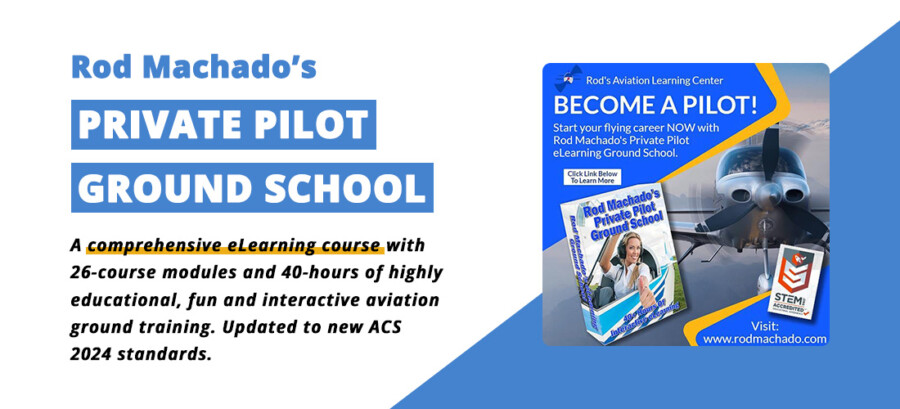Where, When and How to Take the FAA Private Pilot Knowledge Exam in 2025
4 January 2023 | Updated on January 06, 2025
Are you ready to take the next step in your aviation journey and become a private pilot? The first step is to pass the FAA Private Pilot Knowledge Exam. This exam tests your knowledge of all aspects of flying, from airspace regulations to aerodynamics. Taking this exam can be intimidating, but with proper preparation and understanding of what’s required, it doesn’t have to be.
In this article, we’ll explain everything you need for the FAA Private Pilot Knowledge Exam, how to register and what to bring with you on the day of the exam, so that when you sit down at the testing center you’ll feel confident and prepared!
Important Disclaimer: The information and data provided here are for informational purposes only, and are subject to change over time. We strive to provide the most current and relevant information, but the dynamic nature of the topics discussed may result in changes that are not immediately reflected in our content. We recommend our readers to conduct their own research and consult with professionals when making significant decisions based on the data or information provided here. Your reliance on the information in this post is solely at your own risk.
When to Register for the FAA Private Pilot Knowledge Exam?
While you may be anxious to get started with the FAA Private Pilot Knowledge Exam, you first need to have completed a private pilot ground school course. There are many options for completing this course, including in-person courses and online courses. We personally recommend Rod Machado’s 40-hour private pilot online ground school course, of which we have also written an in-depth review.
Once you have completed the ground school course, you are ready to register for the exam.


How to Register for the FAA Private Pilot Knowledge Exam in 2025?
First, you’ll need to make sure you’ve registered for an FAA Tracking Number (FTN) via the IACRA (Integrated Airman Certification and/or Rating Application) website prior to taking your exam.
You can register via this link: https://iacra.faa.gov/IACRA/Default.aspx
When you enter the website, click the “Register” link and apply as an “Applicant”, after which you’ll be asked to create login credentials. After filling in all the security questions, you will then receive an FTN number to use for any knowledge tests or practical flight exams that come up – it’s important to keep track of this number!
Next, you need to know where to go to take that exam. You can use the following link to find an FAA testing location in your area: https://faa.psiexams.com/faa/login
What Do You Need to Take With You for the FAA Private Pilot Knowledge Exam?
On the day of your exam, you will need to bring a few items with you.
First and foremost, you will need identification. Just to make sure you know what type of identification will be required to sit for the exam, you can check out this link: https://www.faa.gov/training_testing/testing/media/testing_matrix.pdf.
A picture of you standing by your mom isn’t the type of identification the FAA is looking for nowadays.. In fact, you should bring a U.S. driver’s license or a U.S. government ID or a passport or a military ID. Either one will suffice if you’re a U.S. citizen or a resident alien. If you’re a non-U.S. citizen, then you’ll need a passport and U.S. driver’s license or an ID issued by any government entity.
Finally, you will need the endorsement to take the exam, which is the graduation certificate issued at the end of your ground school course.


After completing Rod Machado’s ground school course, you’re issued a certificate to apply for the FAA knowledge exam.
When you arrive at the Knowledge Exam Testing Center, the good folks here will provide you with the following materials to be used during the exam:
- FAA Knowledge Supplement book, which contains all the graphics and pictures that will be referenced during the exam. This can also be downloaded here: https://www.faa.gov/training_testing/testing/supplements/media/sport_rec_private_akts.pdf
- A sheet of blank paper;
- A transparent sheet for doing performance charts and W&B calculations;
- A pencil;
- And an eraser.
Please take note that a sandwich isn’t one of these items. So definitely eat beforehand if you are hungry, but don’t eat so much that you fall asleep during the exam.
Now, you can take a few of your own items into the exam. For instance, you’ll need your aviation plotter, or you can use a protractor if you wish. And you’ll definitely need an E6-B manual flight computer, or you can bring in one of the electronic versions (E6-B phone apps are not allowed!).
Finally, you can bring in an electronic calculator that does basic arithmetic and has no capability of storing memory data.
Tips When Taking the FAA Private Pilot Knowledge Exam
When taking the written exam, it’s important to keep a few things in mind. Here are some tips provided by Rod Machado, a renowned flight instructor and author of many popular aviation and ground school courses.
During the exam, when you begin measuring cross-country flight legs on the sectional chart, make sure you check to see if the scale on your plotter matches the scale on the bottom of the sectional chart in the FAA knowledge Supplement book. If these scales are different, then use the scale on the referenced chart.
Finally, here’s a bit of advice about answering test questions. On your scratch paper, I want you to write down all the memory aids or cues that you recall from your study near a corner of your blank paper. Draw the airspace triangle, draw the VOR-orienter, and write down the memory cue, “High to Low, Look Out Below.” Write down as many of these memory aids as you can recall before you begin the test. This should take no more than five minutes of your time, and it’s well worth the effort.
The private pilot exam consists of 60 questions, and you’ll have 2 and ½ hours to finish the exam. So, after you’ve listed all your memory aids, go through all the questions you can easily answer first, then return to the unanswered questions. You’ll find that this allows you to build up your confidence during the test. Whatever you do, don’t stand up and yell out, “Who’s the greatest pilot…and why am I?” Save that for later.
It’s almost always wise to do the questions requiring calculations last. I’m speaking of cross-country planning, performance, and weight and balance questions here. Return to these questions later. Each question has three answers and only one is correct. The people who write test questions know how to fool you with answers that look enticing but are actually wrong. However, in many instances, one out of the three answers can usually be easily eliminated. This gives you even odds at picking a correct answer if you don’t know the correct answer. Perhaps the most important thing you can do in answering any FAA test question is to read the question carefully, then read it again to be sure you know what the FAA is asking. Try not to look at the available answers as you’re reading the question. Then use your logical brain to eliminate one of the answers, then eliminate one of the remaining answers. Sometimes it’s easier to eliminate a wrong answer than it is to pick the correct one.
When you’ve answered all the questions, should you go back and change an answer that you feel might not be correct? Absolutely. The research shows that your gut is sometimes the best resource to consult in these situations. Do this, but only if you feel strongly that you do indeed need to make a change in an answer.
Once you’ve completed the exam, you’ll return your test materials to the proctor and receive a report on your test score. A score of 70% is passing, but I know you’ll do better! So I want to wish you great success on your knowledge exam.
This article is based on information provided by Rod Machado, who created numerous courses and a popular Private Pilot Ground School e-Learning Course. While we have paraphrased a few sentences, all rights of the above content go to Rod.
Want to learn more about ground schools? Here are a few other interesting reads!
































